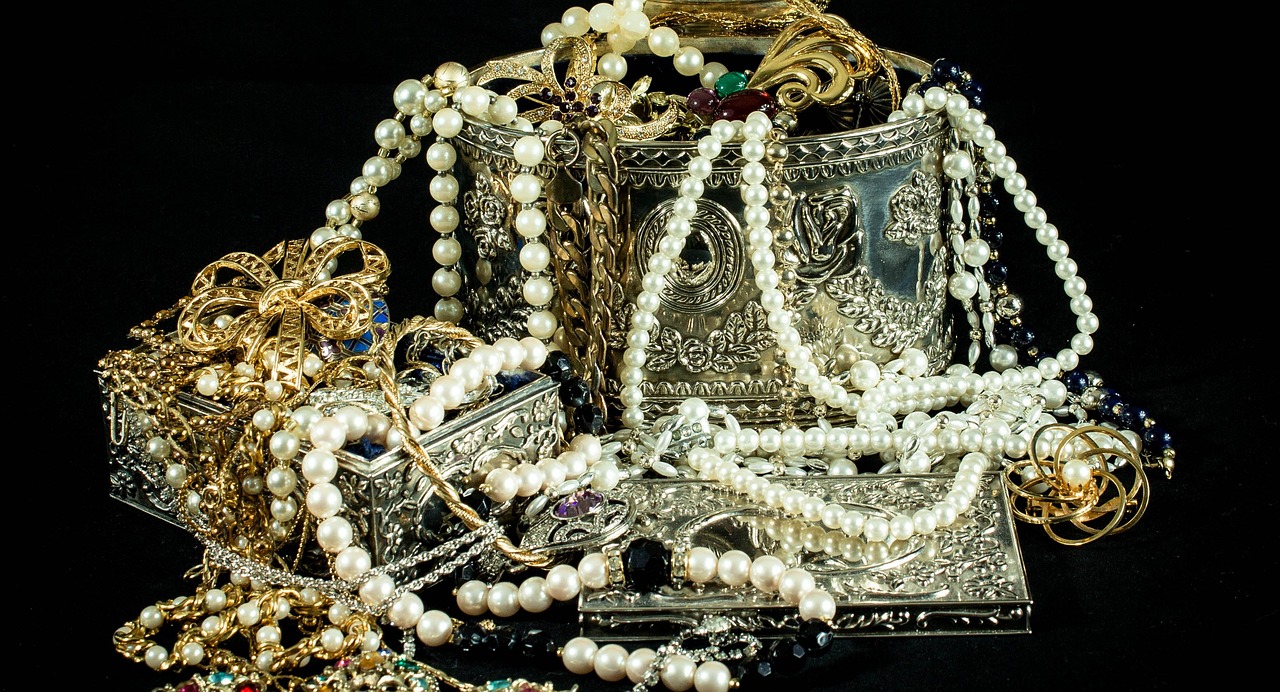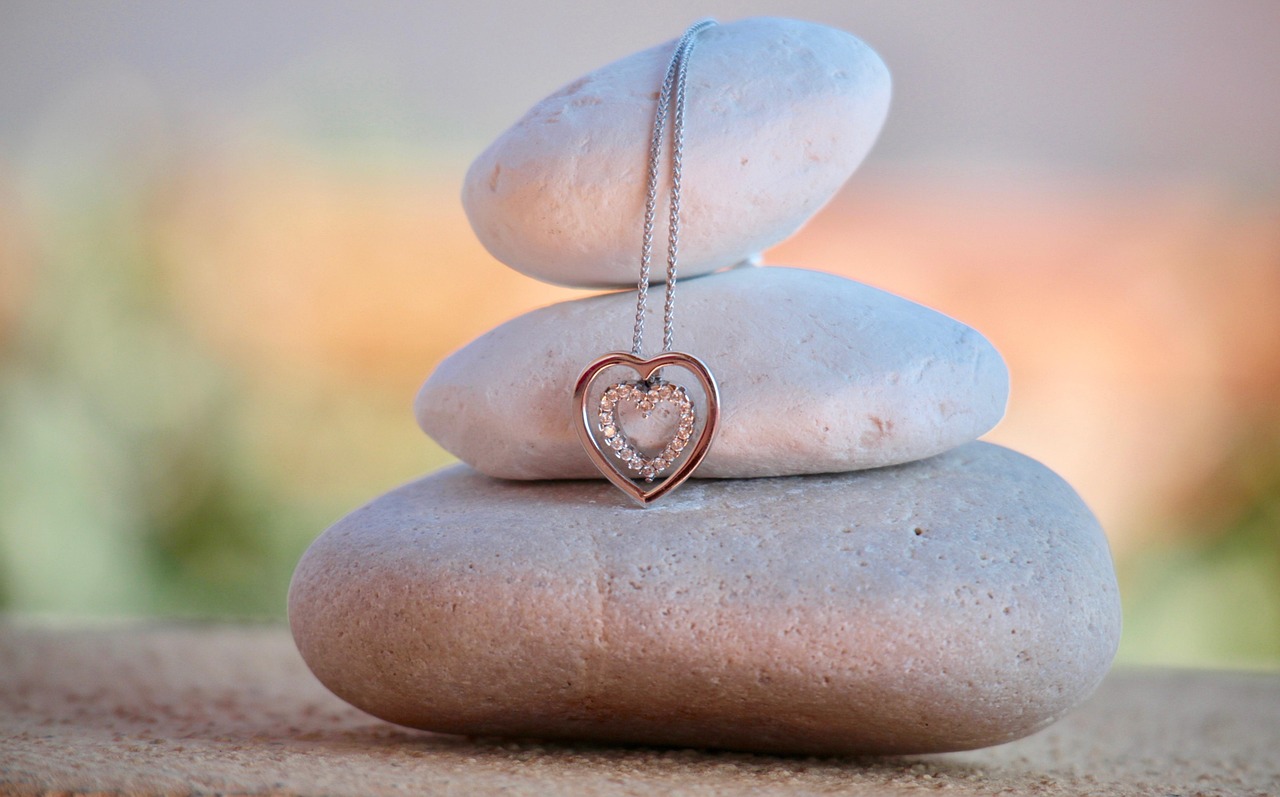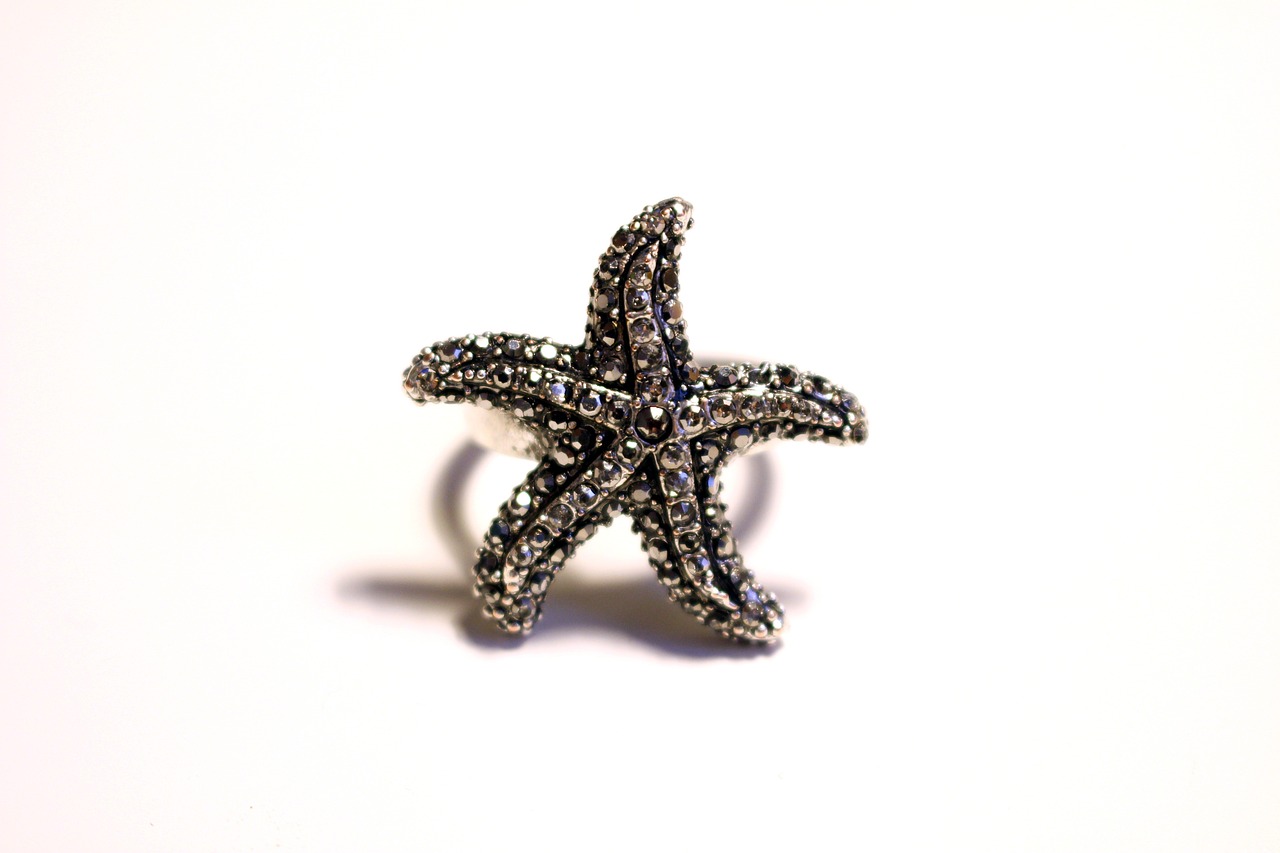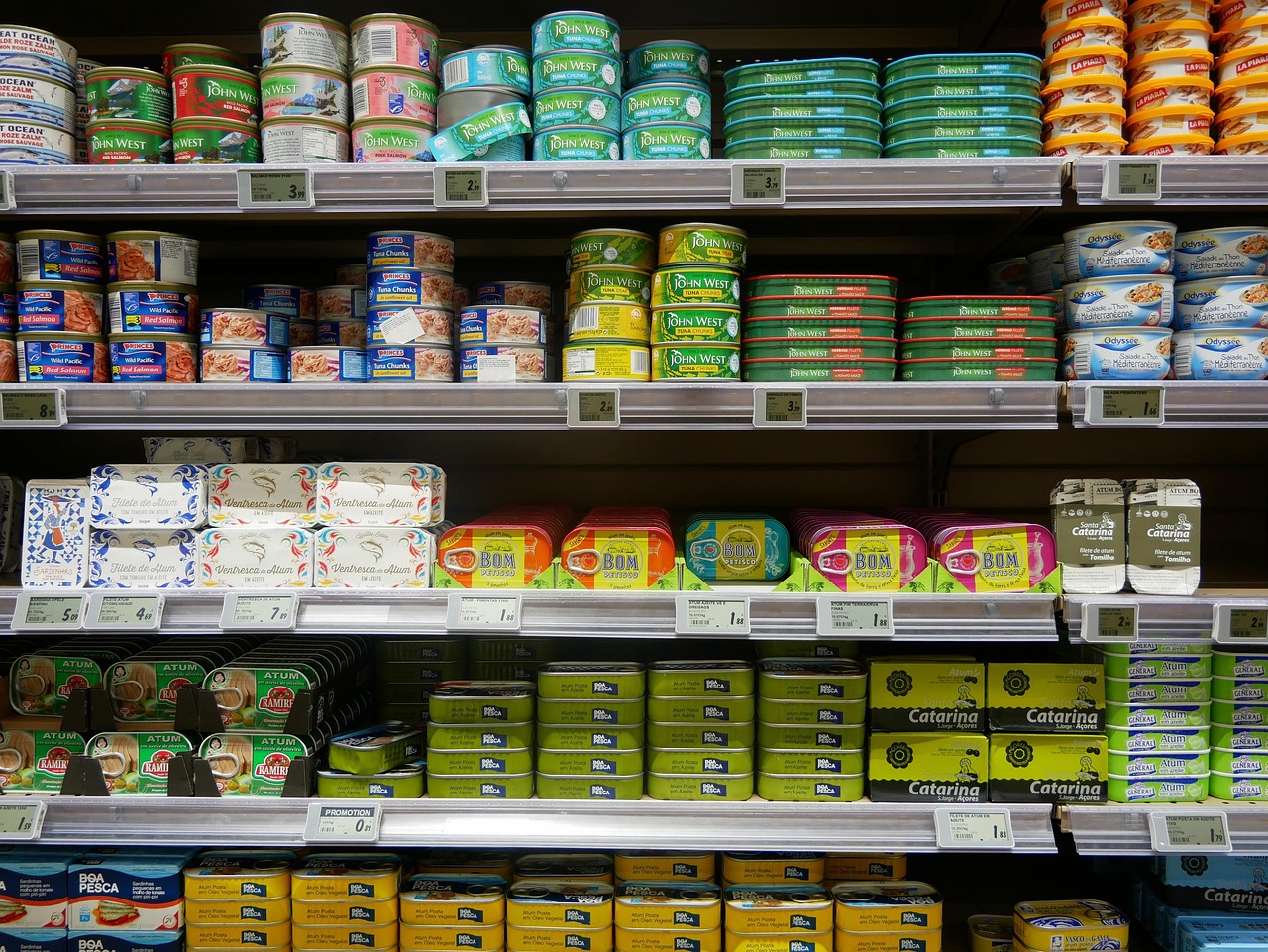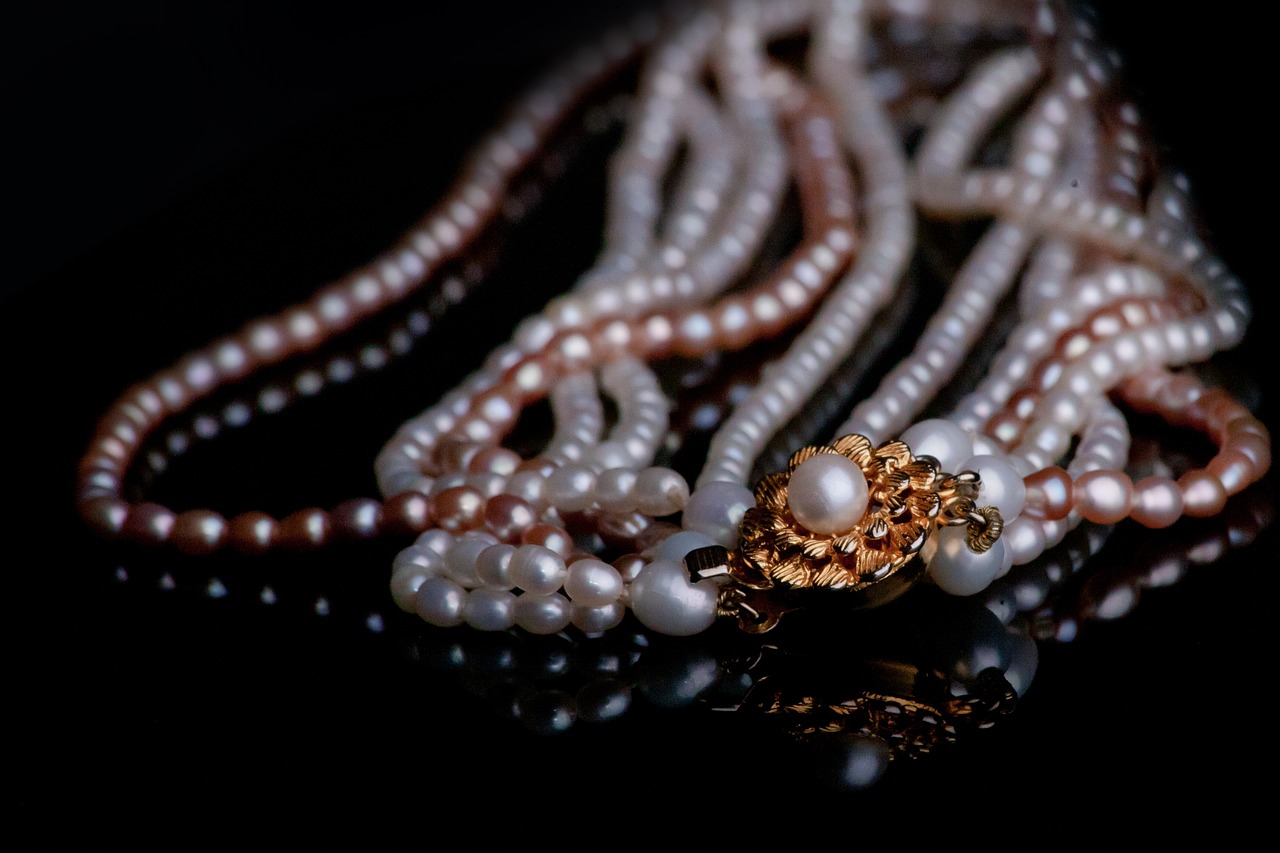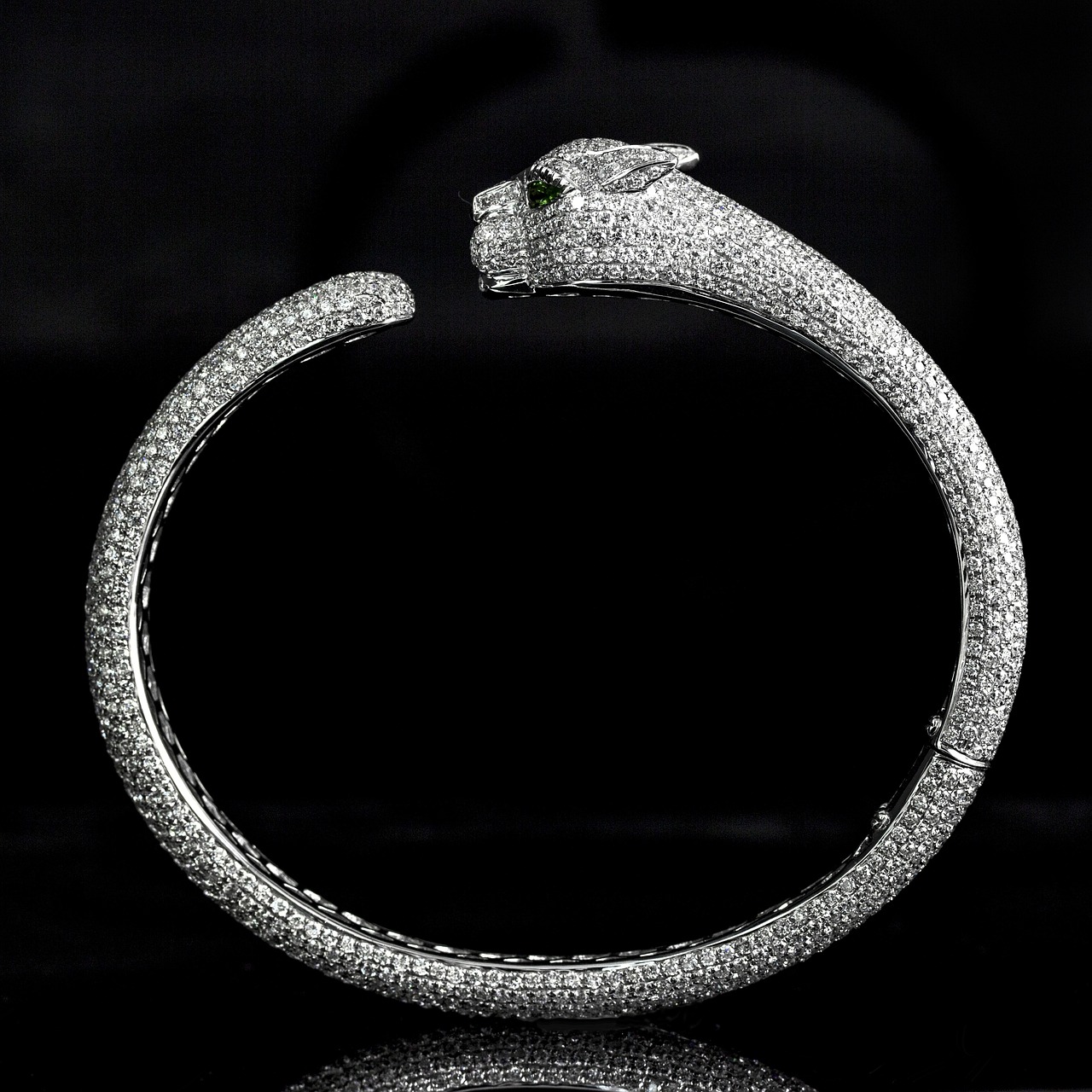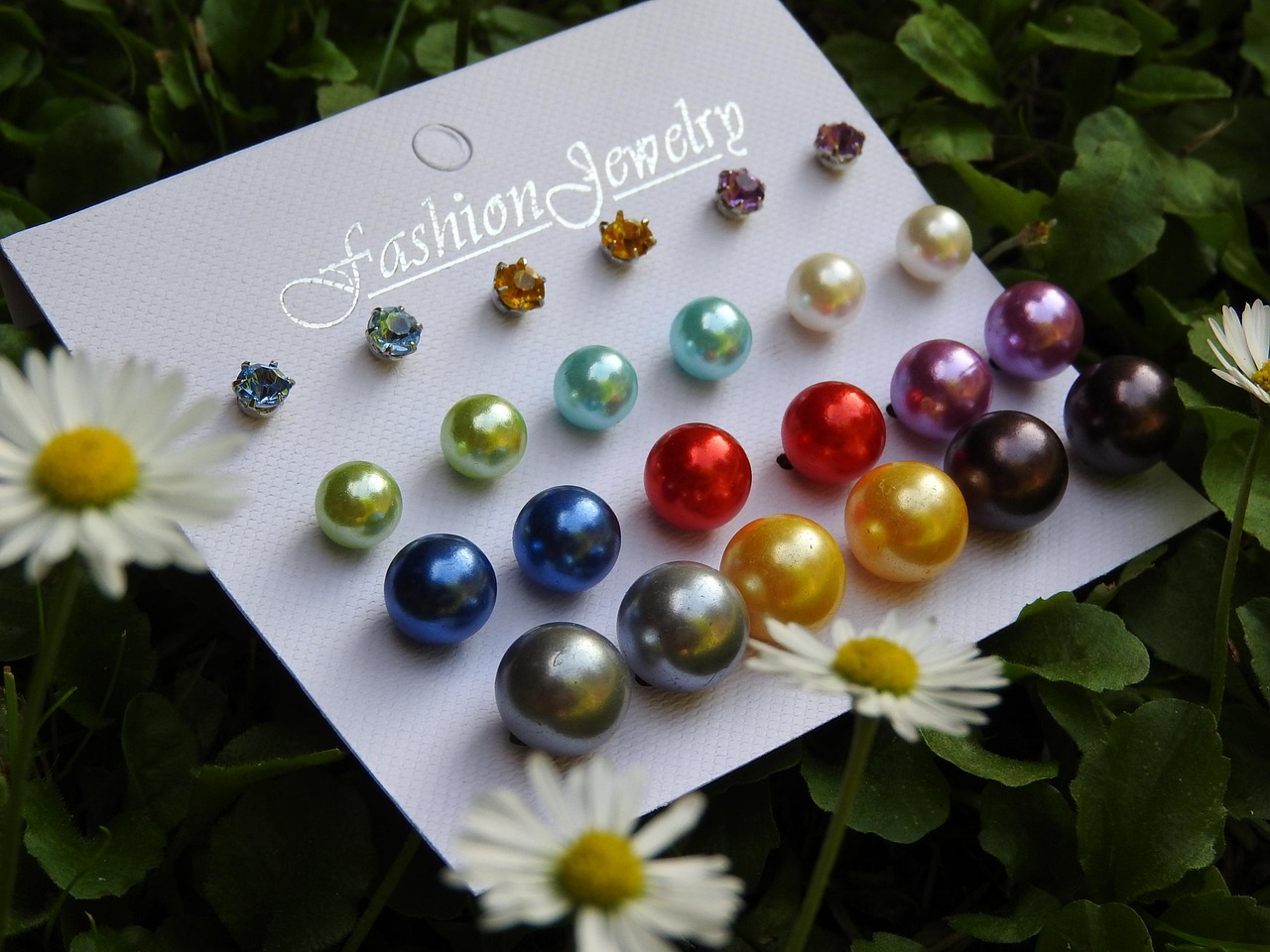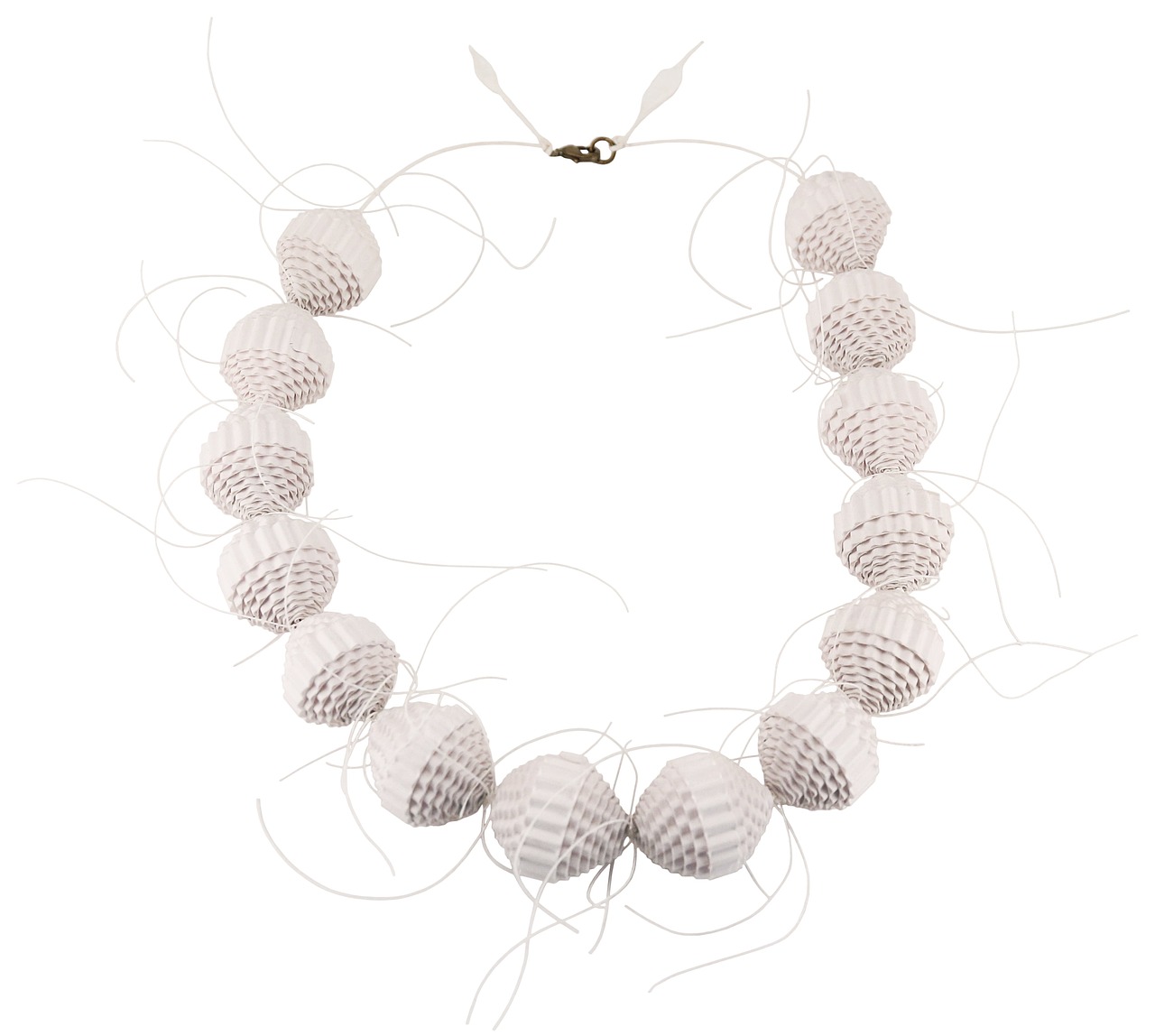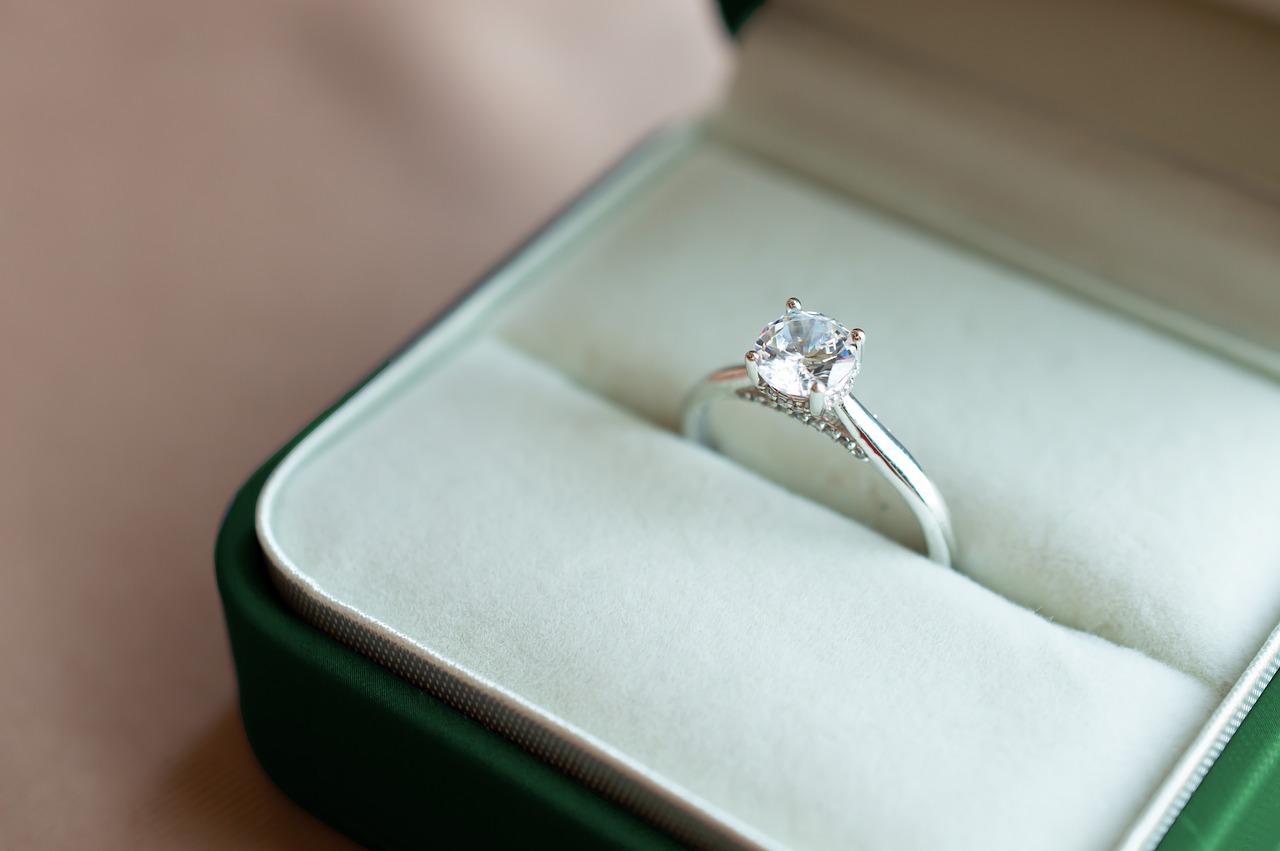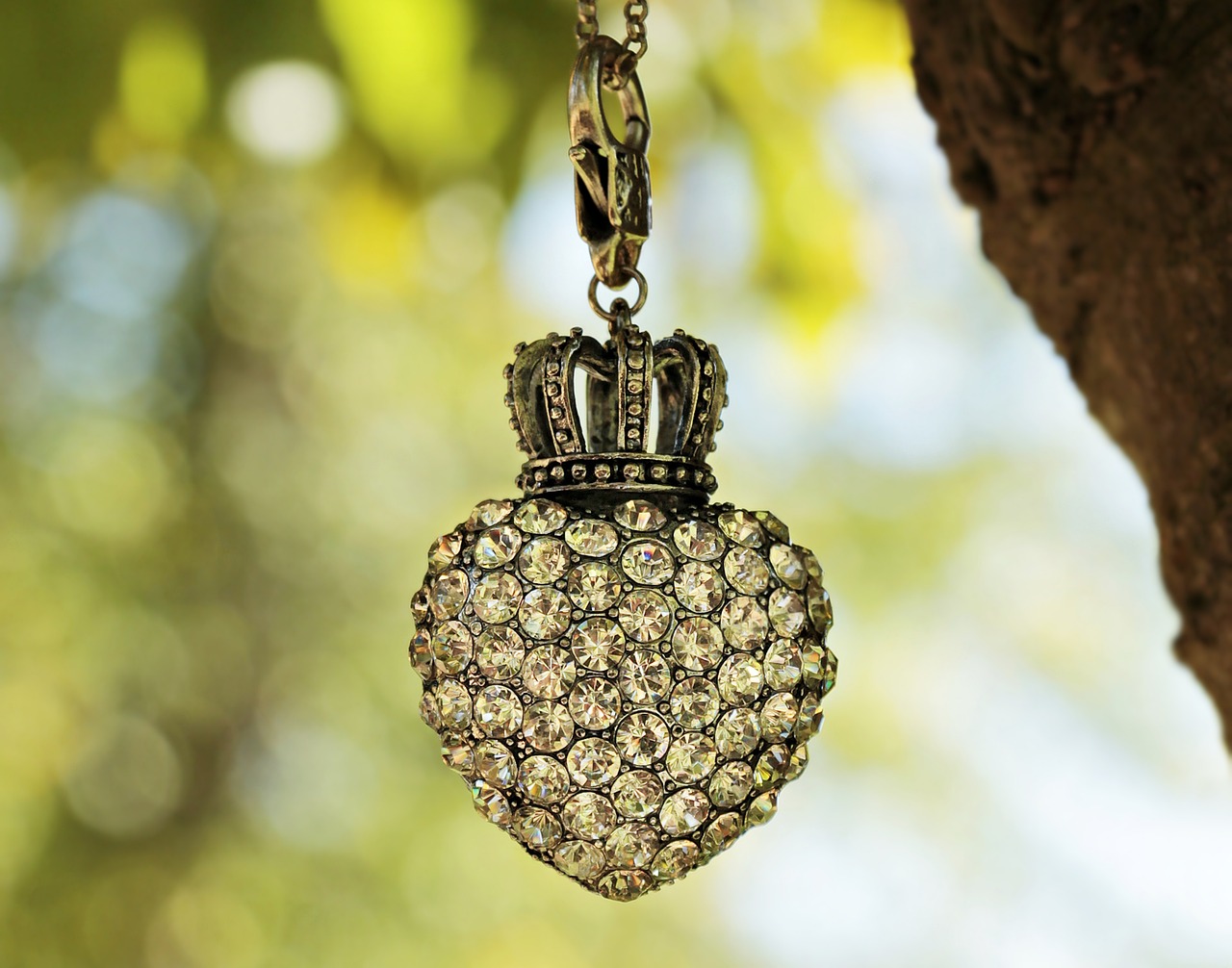This article explores the lucrative world of luxury jewelry investment, providing insights into market trends, tips for beginners, and strategies to maximize profit while minimizing risk.
Why Invest in Luxury Jewelry?
Investing in luxury jewelry offers unique advantages that can appeal to both novice and seasoned investors. Value appreciation, portability, and emotional appeal are just a few of the reasons why this market is attractive. As luxury items often retain their value over time, they can serve as a hedge against inflation and economic uncertainty.
What Are the Key Factors to Consider?
When embarking on your luxury jewelry investment journey, understanding key factors that influence market value is crucial. These include:
- Brand Reputation: Established brands often maintain higher resale values due to their prestige.
- Craftsmanship: The quality of materials and artistry directly impacts a piece’s worth.
- Market Demand: Staying informed about trends can guide your purchasing decisions.
Current Trends in Luxury Jewelry
Staying updated on current trends is essential for identifying which styles and materials are gaining popularity. For instance, sustainability is becoming a significant factor in consumer choices, leading to a rise in demand for ethically sourced gemstones.
Where to Buy Luxury Jewelry for Investment?
Identifying reliable sources is critical to ensuring authenticity and value retention. Consider:
- Authorized Retailers: These ensure authenticity and often provide warranties.
- Auctions and Estate Sales: Unique opportunities to acquire valuable pieces at competitive prices.
How to Evaluate the Value of a Piece?
To evaluate a jewelry piece’s value, consider the following:
- Condition: Regular maintenance can preserve worth over time.
- Provenance: A piece’s history can enhance its value, making it essential to understand its background.
What Are the Risks of Investing in Luxury Jewelry?
Like any investment, luxury jewelry carries risks. Being aware of potential pitfalls can help mitigate losses. Key risks include:
- Market Volatility: The luxury jewelry market can fluctuate based on economic conditions.
- Counterfeit Concerns: Always verify authenticity through reputable sources to protect your investment.
How to Diversify Your Jewelry Portfolio?
Diversification is key to minimizing risk. Incorporating various types of jewelry and materials can provide a balanced approach. Consider:
- Different Types of Jewelry: Including watches, rings, and necklaces can enhance resilience against market changes.
- Investment in Different Materials: A mix of gold, platinum, and gemstones can further diversify your portfolio.
What Are the Best Practices for Selling Luxury Jewelry?
Knowing when and how to sell your luxury jewelry can maximize profits. Key strategies include:
- Timing Your Sale: Selling during peak demand seasons can significantly enhance returns.
- Choosing the Right Selling Platform: Researching options can help you choose the best route for selling.
By understanding the intricacies of luxury jewelry investment, you can make informed decisions that maximize profit while minimizing risk. Whether you are a beginner or an experienced investor, the world of luxury jewelry offers a wealth of opportunities.
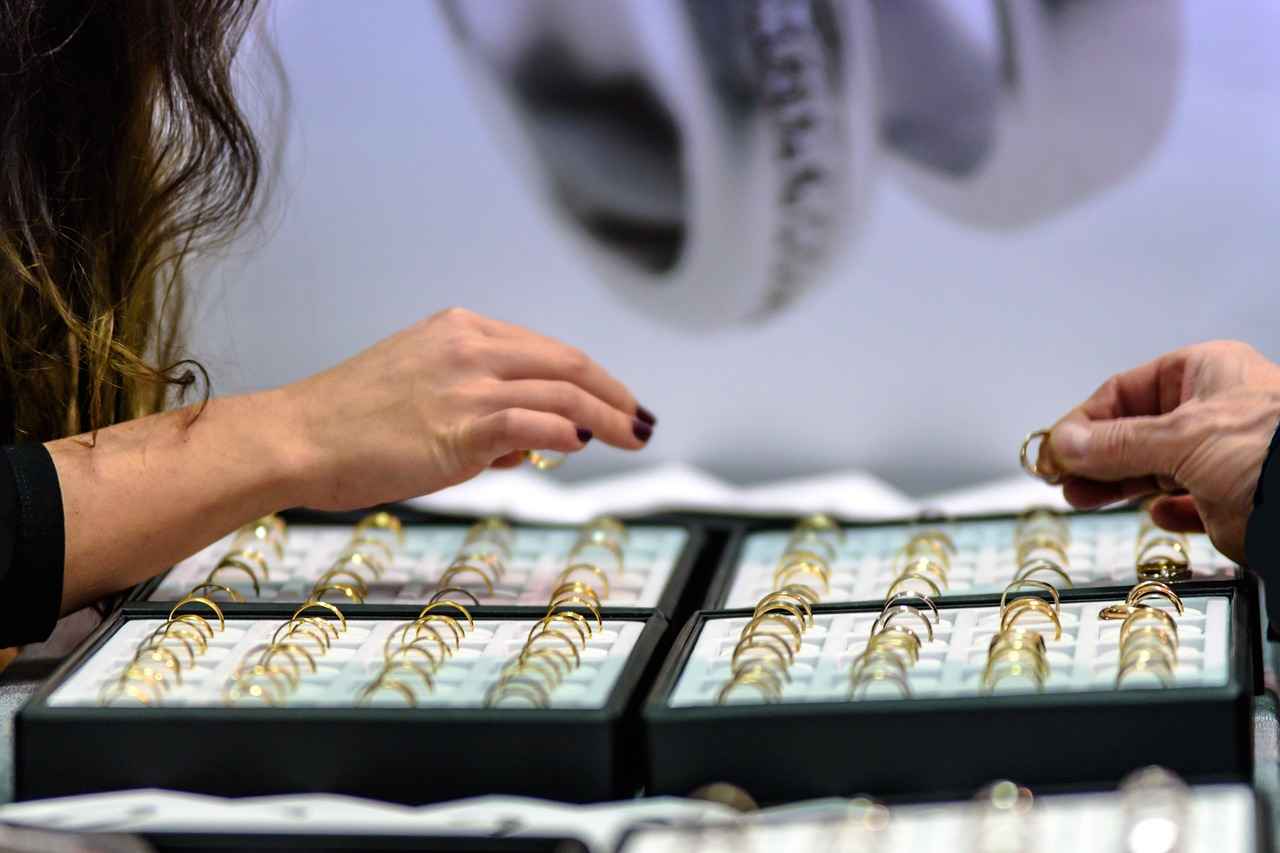
Why Invest in Luxury Jewelry?
Investing in luxury jewelry is more than just a trend; it is a strategic decision that can yield significant rewards. This sector offers a unique blend of value appreciation, portability, and emotional appeal. Understanding these advantages can empower investors to make informed choices that align with their financial goals.
Luxury jewelry is often viewed as a tangible asset that can appreciate over time. Unlike other investments that may be subject to market volatility, high-quality jewelry tends to retain its value due to its intrinsic worth. For example:
- Value Appreciation: Many luxury jewelry pieces, especially those from renowned brands, can appreciate significantly over the years. Historical data shows that certain pieces have doubled or even tripled in value.
- Portability: Unlike real estate or large investments, jewelry is easy to transport and store. This makes it a practical choice for investors looking for flexibility.
- Emotional Appeal: Jewelry often carries sentimental value, making it a personal investment. This emotional connection can enhance the overall value of the piece, especially when it comes to heirlooms.
The luxury jewelry market is influenced by various factors, including trends and consumer preferences. Understanding these dynamics is crucial for successful investments. For instance:
- Current Trends: Staying updated on fashion trends can help investors identify which styles are gaining popularity. For example, vintage and antique jewelry has seen a resurgence in demand, making it a potentially lucrative investment.
- Seasonal Fluctuations: Demand for luxury jewelry often peaks during holiday seasons and special occasions. Timing your purchases during these periods can maximize potential returns.
When considering an investment in luxury jewelry, it is essential to evaluate several key factors:
- Brand Reputation: Established brands often have a loyal customer base, which can enhance the resale value of their pieces. However, emerging brands can also present exciting opportunities for high returns.
- Craftsmanship and Quality: The materials used and the level of craftsmanship directly impact a piece’s value. Investing in high-quality gemstones and metals can lead to better long-term returns.
- Provenance: A piece’s history, including previous ownership and its story, can significantly enhance its value. Understanding provenance can provide insights into potential appreciation.
Authenticity is paramount in luxury jewelry investments. To safeguard your purchase:
- Buy from Reputable Sources: Always purchase from authorized retailers or well-known auction houses to ensure you are getting genuine pieces.
- Request Certification: Many luxury jewelry pieces come with certificates of authenticity. Always ask for these documents to verify the piece’s legitimacy.
While luxury jewelry can be a rewarding investment, it is not without risks. Investors should be aware of:
- Market Volatility: The luxury jewelry market can experience fluctuations based on economic conditions. Understanding these trends can help mitigate risks.
- Counterfeit Concerns: The risk of counterfeit jewelry is significant. Always verify authenticity through reputable sources to protect your investment.
In conclusion, investing in luxury jewelry offers unique advantages that can enhance your investment portfolio. By understanding market dynamics, evaluating key factors, and ensuring authenticity, you can make informed decisions that align with your financial goals.

What Are the Key Factors to Consider?
When embarking on the journey of investing in luxury jewelry, understanding the key factors that influence value is essential. This knowledge not only helps in making informed decisions but also enhances the potential for profit. Below, we delve into the critical elements that every investor should consider.
The brand reputation of a jewelry piece plays a pivotal role in determining its value. Established brands like Cartier and Tiffany & Co. often command higher prices due to their long-standing prestige and recognition in the market. These brands have built a loyal customer base that values quality and heritage.
- Established Brands: These brands typically offer reliability and a proven track record of value retention.
- Emerging Brands: While they may not have the same recognition, emerging brands can offer unique designs and high growth potential, making them attractive for investors looking for the next big thing.
The craftsmanship and quality of materials used in a piece of jewelry significantly affect its market value. High-quality gemstones, such as diamonds and sapphires, along with superior metalwork, can enhance a piece’s desirability. When evaluating jewelry, consider:
- Material Quality: The type of metal (gold, platinum, etc.) and the quality of gemstones are crucial.
- Artisan Techniques: Handcrafted pieces often carry a premium due to the skill and time invested in their creation.
Understanding market demand is vital for making strategic investment choices. Trends in consumer preferences can shift rapidly, influencing the desirability of certain styles or brands. To assess market demand:
- Current Trends: Stay informed about what styles and materials are gaining popularity.
- Seasonal Fluctuations: Recognize peak buying seasons, such as holidays or special events, to time your purchases effectively.
The provenance of a jewelry piece can greatly enhance its value. A piece with a rich history or previous ownership by a notable figure often commands a higher price. When researching provenance, consider the following:
- Previous Ownership: Pieces owned by celebrities or historical figures can be particularly valuable.
- Documentation: Certificates of authenticity and original receipts can significantly increase a piece’s value.
The condition of a jewelry piece is a crucial factor in its valuation. Regular maintenance and proper storage can preserve its worth over time. Investors should be aware of:
- Regular Cleaning: Keeping jewelry clean and free from damage is essential for maintaining its appeal.
- Storage Practices: Proper storage can prevent scratches and other forms of deterioration.
In conclusion, investing in luxury jewelry requires a comprehensive understanding of various factors that influence value. By considering brand reputation, craftsmanship, market demand, provenance, and condition, investors can make informed decisions that maximize their financial returns while enjoying the beauty and artistry of these exquisite pieces.
Brand Reputation
When it comes to investing in luxury jewelry, one of the most critical factors to consider is . The brand behind a piece of jewelry significantly impacts its value, making it essential for investors to understand how a brand’s prestige can influence their investment decisions.
Renowned brands often retain value better due to their established prestige and loyal customer base. This reputation is built over years, sometimes decades, of delivering high-quality products and exceptional craftsmanship. Luxury brands such as Cartier, Tiffany & Co., and Van Cleef & Arpels have cultivated a strong identity that resonates with consumers, which translates into higher resale values.
Investors should consider both emerging and established brands. While established brands offer reliability, emerging brands may present high growth potential. Investing in emerging designers can lead to significant profits if they gain recognition and popularity. However, it also comes with higher risks, as their market presence is not yet firmly established.
Limited edition pieces often appreciate faster due to their rarity. Brands that release exclusive collections create a sense of urgency and desirability among consumers. For investors, acquiring these pieces can enhance your portfolio’s value over time, as they are less likely to be available in the market.
The quality of materials and craftsmanship directly affects a jewelry piece’s value. High-quality gemstones and metals contribute to long-term investment potential. A piece from a reputable brand that showcases exceptional craftsmanship is likely to hold its value better than similar pieces from lesser-known brands.
Understanding market demand is essential for making informed investment choices. Renowned brands often dictate market trends, which can significantly influence the resale value of their products. Researching trends and consumer preferences can guide your purchasing decisions and help you identify which brands are currently in demand.
A piece’s history, including previous ownership and its story, can enhance its value. Understanding the provenance can provide insights into potential appreciation. Pieces associated with famous personalities or historical significance often command higher prices.
- Research Brand History: Investigate how long the brand has been in the market and its reputation for quality.
- Check Consumer Reviews: Look for customer feedback and reviews to gauge satisfaction levels.
- Analyze Market Trends: Study how the brand’s pieces have performed in the resale market over time.
In summary, brand reputation plays a pivotal role in the luxury jewelry investment landscape. Investors should prioritize brands with established prestige and a loyal customer base to maximize their potential returns. By understanding the nuances of brand reputation, emerging trends, and market demand, investors can make informed decisions that align with their financial goals.
Emerging vs. Established Brands
When considering investments in luxury jewelry, one crucial decision revolves around whether to focus on emerging brands or established brands. Each category has its unique advantages and challenges, making it essential for investors to weigh their options carefully.
Why Consider Established Brands?
- Reliability: Established brands come with a track record of quality and value retention. Their long-standing reputation often ensures that pieces remain desirable over time.
- Brand Loyalty: Consumers are generally more inclined to invest in brands they recognize and trust, which can lead to steady demand for these products.
- Resale Value: Established brands tend to hold their value better, making them a safer investment for those wary of market fluctuations.
What Are the Benefits of Investing in Emerging Brands?
- High Growth Potential: Emerging brands often have the potential for rapid appreciation as they gain recognition and market share.
- Unique Offerings: Many emerging brands focus on innovative designs and materials, appealing to niche markets and collectors seeking something different.
- Lower Entry Costs: Investing in emerging brands typically requires a smaller initial investment, allowing investors to diversify their portfolios more easily.
How to Evaluate Emerging Brands?
While emerging brands may offer exciting opportunities, they also come with risks. Investors should conduct thorough research to assess potential investments:
- Market Trends: Understanding current trends can help investors identify which emerging brands are gaining traction.
- Craftsmanship: Evaluate the quality of materials and craftsmanship to ensure that the pieces will stand the test of time.
- Brand Story: A compelling narrative can enhance a brand’s appeal, making it more attractive to potential buyers.
Balancing Your Portfolio
Investors should consider a balanced approach by incorporating both emerging and established brands into their portfolios. This strategy can mitigate risks associated with market volatility while maximizing growth potential. By diversifying across different brands, investors can take advantage of the stability offered by established names while also capitalizing on the innovative spirit of emerging designers.
Ultimately, whether you choose to invest in emerging or established brands will depend on your investment goals, risk tolerance, and market knowledge. Both categories offer unique opportunities that can enhance your jewelry investment portfolio.
Limited Editions and Exclusivity
When it comes to investing in luxury jewelry, limited edition pieces hold a special place in the market. Their rarity and exclusivity often make them more desirable to collectors and investors alike. In this section, we will delve into the significance of limited editions and how they can positively impact your investment portfolio.
Limited edition jewelry is produced in restricted quantities, which inherently increases its scarcity. This scarcity can lead to a rapid appreciation in value over time. Collectors and investors are often willing to pay a premium for items that are not easily available. The allure of owning something unique adds to the emotional value, making these pieces not just investments but also cherished possessions.
The exclusivity of limited edition jewelry creates a buzz in the market. When a renowned brand releases a limited collection, it often garners significant attention from both media and consumers. This heightened visibility can lead to increased demand, which in turn drives up the price. Investors who recognize these trends can make strategic purchases that yield substantial returns.
- Designer Collaborations: Collaborations between established designers and luxury brands often result in unique pieces that attract collectors.
- Anniversary Editions: Jewelry released to commemorate significant anniversaries of brands or collections often sees increased interest.
- Artisan Creations: One-of-a-kind pieces crafted by skilled artisans can also fall into the limited edition category, offering unique investment opportunities.
Investors should consider several factors when identifying promising limited edition pieces:
- Brand Reputation: Renowned brands often have a history of value retention and appreciation, making their limited editions more desirable.
- Market Trends: Staying informed about current trends can help investors spot which limited editions are gaining traction.
- Quality and Craftsmanship: High-quality materials and exceptional craftsmanship are indicators of a piece’s potential for appreciation.
While limited edition pieces can offer great potential for appreciation, they are not without risks. Market fluctuations can impact demand, and not all limited editions will appreciate as expected. Additionally, counterfeit concerns are prevalent in the luxury market, making it essential to verify authenticity before making a purchase.
Incorporating limited edition pieces into your jewelry portfolio can enhance its overall value. However, diversification is crucial. Consider investing in a range of pieces from different brands and styles to mitigate risks. By balancing your investments with both limited editions and more traditional pieces, you can create a resilient portfolio.
In conclusion, investing in limited edition jewelry offers the potential for significant returns due to their rarity and market demand. By understanding the factors that contribute to their value and being mindful of the associated risks, investors can make informed decisions that enhance their portfolios over time.
Craftsmanship and Quality
When it comes to investing in luxury jewelry, craftsmanship and quality are two of the most critical factors that can significantly influence a piece’s value. The intricate artistry involved in creating a jewelry item, combined with the superior quality of materials used, plays a vital role in determining its long-term investment potential.
The craftsmanship of a jewelry piece reflects the skill and expertise of the artisans who create it. High-quality craftsmanship ensures that every detail is meticulously attended to, enhancing the overall aesthetic appeal and durability of the piece. Jewelry that is well-crafted not only looks stunning but also stands the test of time, making it a wise investment choice.
The choice of materials is equally important. High-quality gemstones and precious metals, such as gold and platinum, contribute significantly to a jewelry piece’s intrinsic value. For instance, a ring made from high-grade diamonds will generally appreciate more than one made from lower-quality stones. Similarly, the purity of the metal used can greatly affect the piece’s marketability and resale value.
- Attention to Detail: Examine the intricacies of the design. Well-crafted pieces will have smooth edges, secure settings, and flawless finishes.
- Brand Reputation: Renowned jewelry brands often maintain rigorous quality standards. Investing in pieces from reputable brands can reduce the risk of purchasing inferior craftsmanship.
- Expert Appraisals: Seek professional appraisals to assess the quality of craftsmanship and materials. A qualified gemologist can provide insights into the authenticity and value of a piece.
Investing in jewelry that embodies exceptional craftsmanship and high-quality materials can yield substantial long-term benefits. Such pieces often appreciate in value, providing a solid return on investment. Moreover, they can serve as heirlooms, passed down through generations, thereby holding sentimental value in addition to their financial worth.
Jewelry pieces that showcase superior craftsmanship tend to attract more buyers, especially in a market that values authenticity and quality. As consumers become increasingly aware of the importance of craftsmanship, the demand for high-quality pieces continues to rise. This trend can lead to higher resale values, making well-crafted jewelry a more lucrative investment.
Investing in jewelry with high craftsmanship and quality can also help mitigate investment risks. Pieces that are well-made and feature premium materials are less likely to depreciate over time. In contrast, poorly crafted jewelry may suffer from wear and tear, leading to a decrease in value. By focusing on quality, investors can safeguard their investments against market fluctuations.
In conclusion, the interplay between craftsmanship and quality is crucial in the luxury jewelry market. By prioritizing these factors, investors can enhance their portfolios, ensuring that their jewelry not only retains its value but also appreciates over time. Understanding the significance of these elements can empower investors to make informed decisions, ultimately leading to a successful investment journey in luxury jewelry.
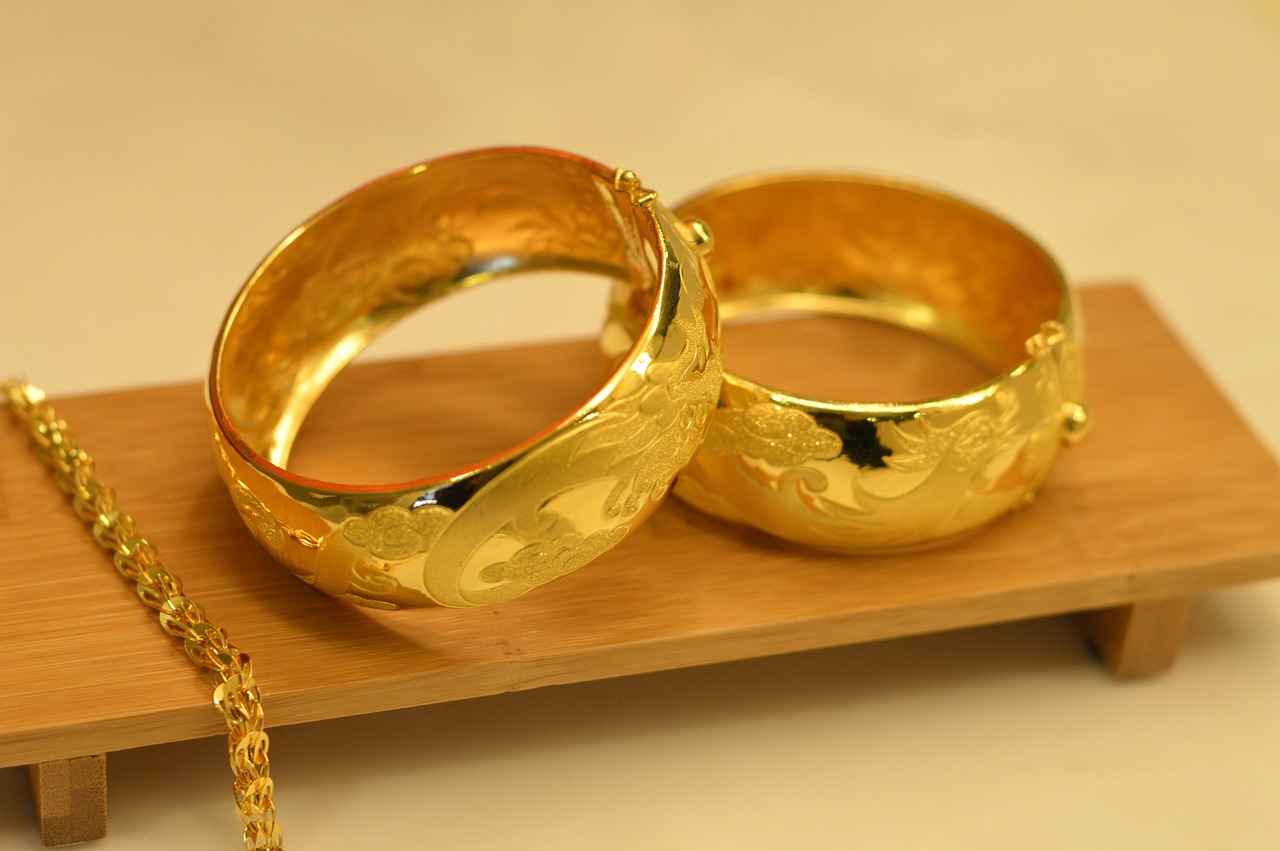
How to Assess Market Demand?
Understanding market demand is a pivotal aspect of making informed investment choices, particularly in the luxury jewelry sector. Analyzing market trends and consumer preferences can significantly influence your purchasing decisions and investment strategies.
To effectively assess market demand, it is essential to consider various factors that shape consumer behavior and preferences. Here are some key elements to focus on:
- Consumer Trends: Keeping an eye on the latest trends in luxury jewelry can provide valuable insights into what styles, materials, and brands are currently in demand. For instance, the rise of sustainable and ethically sourced jewelry has gained traction among environmentally conscious consumers.
- Market Research: Conducting thorough market research can help identify shifts in consumer preferences. This can include analyzing sales data, attending trade shows, and following industry publications to stay updated on emerging trends.
- Competitor Analysis: Understanding what other investors and retailers are doing can give you a competitive edge. By observing successful strategies and popular pieces, you can make more informed decisions about your investments.
Moreover, it’s important to recognize how seasonal fluctuations can impact market demand. The luxury jewelry market often experiences peaks during festive seasons, weddings, and holidays. Timing your purchases to coincide with these high-demand periods can enhance your investment potential.
In addition, leveraging online platforms and social media can provide real-time insights into consumer sentiment. Engaging with potential buyers and following influencers in the jewelry space can help you gauge what is trending and what might be worth investing in.
Furthermore, understanding the demographics of your target market is crucial. Different age groups and income levels may prefer distinct styles and brands. For example, millennials may lean towards modern and minimalist designs, while older generations might favor classic, timeless pieces.
Another significant factor to consider is the impact of economic conditions on luxury spending. During economic downturns, consumers may prioritize essential purchases over luxury items. Keeping abreast of economic indicators can help you anticipate shifts in market demand.
For those looking to invest in luxury jewelry, it is also wise to consider the emotional appeal of jewelry purchases. Many buyers are motivated by personal connections, such as gifting or commemorating special occasions. Understanding these emotional drivers can inform your investment choices.
In conclusion, assessing market demand requires a multifaceted approach that includes research, trend analysis, and understanding consumer behavior. By staying informed and adapting to market changes, you can position yourself for success in the luxury jewelry investment landscape.
Current Trends in Luxury Jewelry
In the dynamic world of luxury jewelry, staying informed about current trends is essential for investors looking to make strategic decisions. The jewelry market is influenced by various factors, including cultural shifts, celebrity endorsements, and technological advancements. By understanding these trends, investors can identify which styles and materials are gaining popularity, ultimately leading to more informed and profitable investments.
Current trends serve as a compass for investors, guiding them toward pieces that are likely to appreciate in value. By recognizing what styles and materials are in demand, investors can avoid stagnant investments and focus on pieces with high potential for growth. For instance, a surge in interest for sustainable jewelry made from recycled materials could signal a lucrative opportunity for those looking to invest in eco-friendly options.
- Personalization and Customization: More consumers are seeking personalized jewelry that reflects their unique identities. This trend opens avenues for investors to look for pieces that offer customization options.
- Vintage and Antique Styles: There is a growing appreciation for vintage and antique jewelry. Investors should consider acquiring pieces that have historical significance or unique craftsmanship.
- Technological Integration: The rise of technology in jewelry design, such as 3D printing and smart jewelry, is creating new investment opportunities. Understanding these innovations can help investors stay ahead of the curve.
- Colored Gemstones: While diamonds have long been the standard for luxury jewelry, colored gemstones are gaining traction. Investors should watch for emerging trends in specific colors and types of gemstones.
- Minimalism vs. Bold Statements: The market is currently experiencing a tug-of-war between minimalist designs and bold statement pieces. Recognizing which style is trending can help investors make timely purchases.
Investors should actively seek out reliable resources to stay informed about current trends in luxury jewelry. Here are some effective strategies:
- Follow Industry Publications: Subscribe to leading jewelry magazines and online platforms that cover market trends and consumer preferences.
- Engage with Social Media: Platforms like Instagram and Pinterest are excellent for spotting emerging trends through influencers and designers.
- Attend Trade Shows: Participating in jewelry trade shows can provide firsthand insights into upcoming trends and networking opportunities with industry experts.
- Join Online Forums: Engaging with communities focused on jewelry investment can provide valuable insights and shared experiences.
Understanding seasonal fluctuations is key for timing investments. Luxury jewelry demand often peaks during the holiday season, weddings, and other significant life events. Investors should recognize these patterns to capitalize on high-demand periods.
In conclusion, staying updated on current trends in luxury jewelry is crucial for making strategic investments. By understanding the market’s evolving landscape, investors can identify opportunities that align with consumer preferences, ensuring their portfolios remain robust and profitable.
Seasonal Fluctuations
Investing in luxury jewelry is not just about purchasing beautiful pieces; it is also about understanding the intricate dynamics of the market. One critical aspect of this market is the in demand, which can significantly impact investment strategies.
The demand for luxury jewelry often varies throughout the year, influenced by factors such as holidays, fashion trends, and economic conditions. Recognizing these peak buying seasons can provide investors with a strategic advantage, allowing them to time their purchases effectively for maximum profitability.
- Holiday Seasons: Major holidays such as Christmas, Valentine’s Day, and Mother’s Day see a surge in jewelry purchases. Consumers often seek gifts during these times, driving up demand.
- Wedding Season: The summer months are traditionally popular for weddings, leading to increased demand for engagement rings and bridal jewelry.
- Fashion Weeks: Events like New York, Paris, and Milan Fashion Weeks can influence trends, resulting in spikes in demand for specific styles and designers.
By understanding these seasonal trends, investors can make informed decisions about when to buy and sell jewelry. For example, purchasing pieces during off-peak seasons, when prices may be lower, can lead to substantial profits when demand increases.
Conducting thorough market research is essential for identifying upcoming trends. Keeping an eye on social media, fashion blogs, and industry reports can provide insights into which styles are gaining popularity. This knowledge enables investors to anticipate market movements and adjust their portfolios accordingly.
Economic factors also play a crucial role in shaping seasonal demand. During times of economic uncertainty, consumers may be less inclined to make luxury purchases. Conversely, in a thriving economy, spending on luxury items, including jewelry, often increases. Understanding these economic indicators can help investors time their market entries and exits effectively.
To maximize profitability, investors should consider the following strategies:
- Buy Low, Sell High: Aim to acquire pieces during low-demand periods and sell them when demand peaks.
- Monitor Sales Events: Take advantage of seasonal sales and promotions offered by retailers, which can provide opportunities to buy high-quality pieces at discounted prices.
- Network with Industry Experts: Building relationships with jewelers and industry insiders can provide valuable insights into upcoming trends and potential investment opportunities.
Understanding seasonal fluctuations in luxury jewelry demand is vital for investors looking to maximize their returns. By recognizing peak buying seasons and leveraging market trends, investors can make informed decisions that enhance their portfolios and increase profitability. With careful research and strategic timing, investing in luxury jewelry can be a rewarding venture.

Where to Buy Luxury Jewelry for Investment?
Investing in luxury jewelry can be a rewarding venture, but it requires careful consideration, especially when it comes to purchasing. Identifying reliable sources for purchasing luxury jewelry is crucial. Knowing where to buy can ensure authenticity and value retention. In this section, we will explore various avenues for acquiring luxury jewelry, highlighting the importance of purchasing from reputable sources.
When investing in luxury jewelry, the source from which you purchase plays a vital role in determining the overall value and authenticity of the piece. Buying from unreliable sources can lead to:
- Counterfeit Risks: The luxury market is rife with counterfeit items, which can significantly diminish the value of your investment.
- Loss of Value: Jewelry purchased from dubious sources may not retain its value over time, leading to potential financial losses.
- Lack of Documentation: Reliable sources often provide certificates of authenticity, which are essential for resale and valuation.
Purchasing luxury jewelry from authorized retailers is one of the safest ways to ensure you are getting an authentic piece. These retailers are officially recognized by luxury brands and offer:
- Warranties: Many authorized retailers provide warranties that protect your investment against defects.
- Expert Guidance: Knowledgeable staff can assist you in making informed decisions based on your investment goals.
- Return Policies: Authorized retailers typically have favorable return policies, allowing you to return or exchange items if necessary.
Auctions and estate sales can be excellent sources for finding unique luxury jewelry pieces at potentially lower prices. These venues offer:
- Exclusive Items: Many auction houses feature rare pieces that are not available in retail stores.
- Competitive Pricing: Bidding can drive prices down, allowing savvy investors to acquire high-value items at a fraction of their retail cost.
- Provenance: Items sold at auctions often come with detailed histories, enhancing their investment appeal.
With the rise of e-commerce, online platforms have become increasingly popular for purchasing luxury jewelry. However, it is essential to choose reputable websites. Look for:
- Verified Sellers: Ensure that the platform verifies its sellers and provides ratings and reviews from previous customers.
- Secure Payment Options: Use platforms that offer secure payment methods to protect your financial information.
- Return Policies: Check the return policies to ensure you have options if the jewelry does not meet your expectations.
Working with private dealers and jewelers can offer a more personalized experience. These professionals can provide:
- Customization: Many private jewelers offer custom designs, allowing you to create a unique investment piece.
- Expert Insights: Experienced jewelers can provide valuable insights into market trends and investment potential.
- Building Relationships: Establishing a relationship with a trusted jeweler can lead to exclusive offers and early access to new collections.
In conclusion, knowing where to buy luxury jewelry is essential for ensuring authenticity and value retention. By focusing on reliable sources such as authorized retailers, auctions, online platforms, and private dealers, you can enhance your investment strategy and enjoy the benefits of luxury jewelry ownership.
Authorized Retailers
When it comes to investing in luxury jewelry, one of the most crucial decisions you can make is where to purchase your pieces. This choice not only impacts the authenticity of your investment but also its long-term value. play a pivotal role in this process, ensuring that you acquire genuine items that hold their value over time.
Purchasing from guarantees authenticity and often provides warranties, enhancing the security of your investment. Here are several key reasons why buying from these trusted sources is essential:
- Authenticity Assurance: Authorized retailers are certified by the brands they represent, ensuring that every piece sold is genuine. This reduces the risk of acquiring counterfeit items, which can lead to significant financial losses.
- Warranties and Guarantees: Many authorized retailers offer warranties on their jewelry. This means that if any issues arise with the piece, you have recourse for repairs or replacements, adding an extra layer of security to your investment.
- Expert Guidance: Shopping at authorized retailers often comes with the benefit of knowledgeable staff who can provide expert insights on the jewelry. They can help you understand the nuances of different pieces, including their value, care, and market trends.
- Access to Limited Editions: Authorized retailers frequently have exclusive access to limited edition pieces. These items tend to appreciate more rapidly due to their rarity, making them a smart investment choice.
Finding authorized retailers is vital for ensuring that you are making a sound investment. Here are some tips to help you identify them:
- Brand Websites: Start by visiting the official websites of the luxury brands you are interested in. They typically have a list of authorized retailers or boutiques.
- Certification: Look for certifications or memberships in reputable jewelry associations. This can be an indicator that the retailer adheres to industry standards.
- Customer Reviews: Research customer feedback on platforms like Google or Yelp. Positive reviews and high ratings can indicate a reliable retailer.
- In-Person Visits: If possible, visit the retailer’s physical location. A well-maintained store with knowledgeable staff is often a good sign of an authorized dealer.
Choosing to purchase luxury jewelry from unauthorized sources can lead to several risks:
- Counterfeit Products: The primary risk is the potential for counterfeit items. Without proper verification, you may end up with a piece that is not genuine, severely impacting its resale value.
- Lack of Warranty: Unauthorized retailers often do not provide warranties, leaving you vulnerable if the piece is damaged or defective.
- Limited Resale Opportunities: Jewelry purchased from unauthorized sources may be harder to sell in the future. Buyers often prefer pieces with verified authenticity, which can limit your options.
In summary, purchasing luxury jewelry from authorized retailers is a critical step in securing your investment. Not only does it ensure authenticity, but it also provides warranties and access to expert advice. By taking the time to identify reputable sources, you can safeguard your investment and enhance the value of your jewelry portfolio.
Auctions and Estate Sales
Investing in luxury jewelry can be an exciting venture, particularly when exploring avenues like auctions and estate sales. These platforms often present unique opportunities to acquire exquisite pieces at competitive prices, making them appealing choices for savvy investors. Understanding how to navigate these options can lead to significant rewards.
Auctions are events where items are sold to the highest bidder, while estate sales typically occur when an individual’s belongings are sold, often due to downsizing or after a passing. Both avenues can yield valuable jewelry, often at prices below retail value.
- Competitive Pricing: Auctions can provide competitive prices as bidders compete for items, often driving prices lower than retail.
- Unique Finds: Auctions often feature rare and unique pieces that may not be available through traditional retail channels.
- Transparency: The auction process is transparent, allowing buyers to see the bidding history and gauge the value of items.
To maximize your success at auctions, consider the following strategies:
- Research: Prior to the auction, research the pieces of interest. Understanding the brand, materials, and market demand can help you bid confidently.
- Set a Budget: Determine your maximum bid beforehand to avoid emotional overspending during the auction.
- Inspect Items: If possible, inspect items in person. This allows you to assess the condition and authenticity before placing a bid.
Estate sales offer a different approach to acquiring luxury jewelry. They often feature a range of items from a single owner’s collection, providing opportunities to find unique pieces at reasonable prices.
- Personal Touch: Estate sales often have a personal history attached to the items, adding emotional value to your investment.
- Negotiation Opportunities: Unlike auctions, estate sales may allow for negotiation on prices, potentially leading to better deals.
- Less Competition: Depending on the sale, there may be less competition than at auctions, making it easier to acquire desired pieces.
Finding reputable auctions and estate sales is crucial for successful investments:
- Online Platforms: Websites like AuctionZip and EstateSales.net provide listings of upcoming sales and auctions.
- Local Listings: Check local newspapers and community boards for announcements about estate sales in your area.
- Social Media: Follow local auction houses and estate sale companies on social media for updates and previews.
While auctions and estate sales can be rewarding, there are risks to consider:
- Authenticity: Always verify the authenticity of high-value items. Look for certificates or expert appraisals to ensure you are making a sound investment.
- Condition Issues: Be aware of the condition of the jewelry. Items may require repairs or restoration, which can add to your overall costs.
- Market Volatility: The luxury jewelry market can fluctuate. Stay informed about market trends to make educated investment decisions.
In conclusion, auctions and estate sales can be exceptional avenues for investing in luxury jewelry. By conducting thorough research, participating strategically, and remaining vigilant about authenticity and condition, you can enhance your collection while potentially achieving significant returns on your investments.
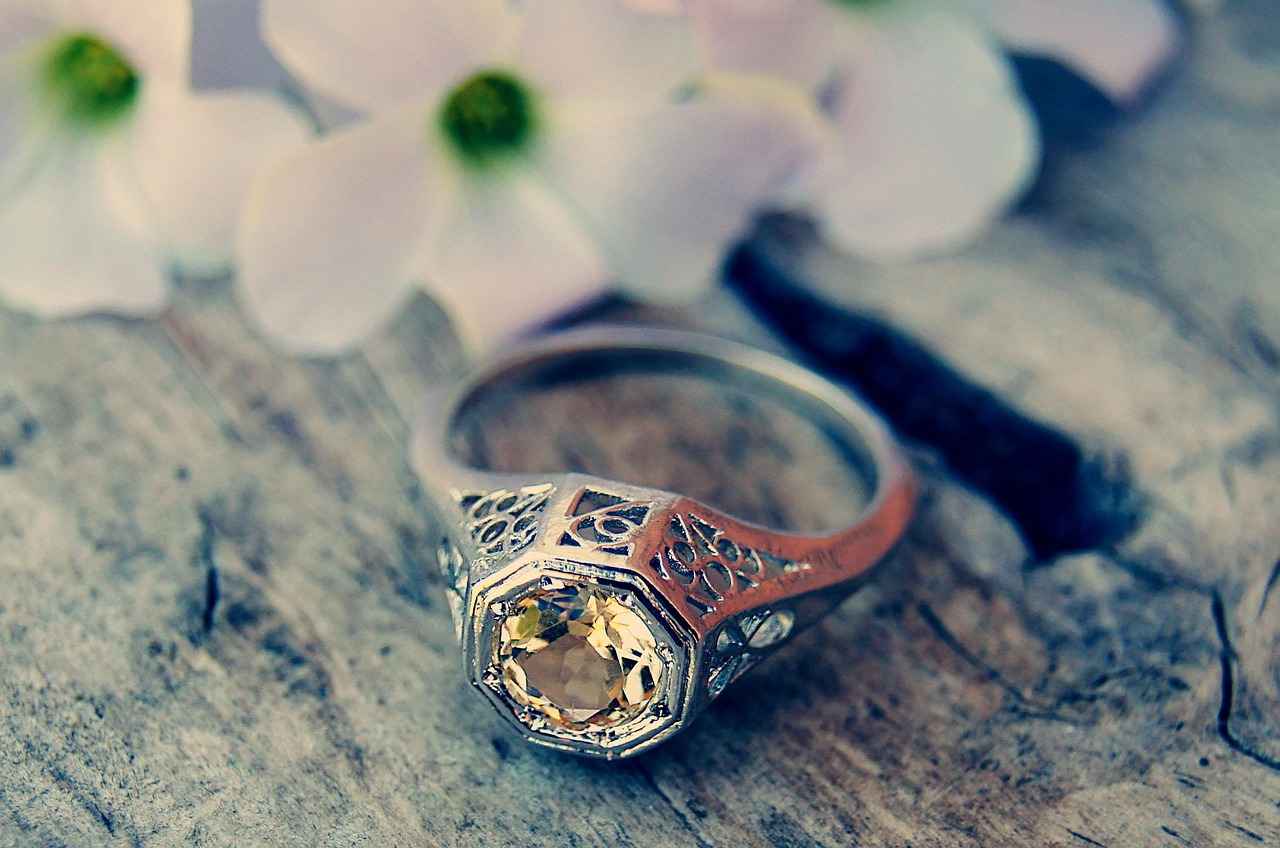
How to Evaluate the Value of a Piece?
When it comes to investing in luxury jewelry, understanding how to evaluate the value of a piece is crucial. This process involves a comprehensive assessment of various elements that contribute to a jewelry piece’s worth. By doing so, you can make informed purchasing decisions and avoid the pitfalls of overpaying.
Several factors play a significant role in determining the value of a jewelry piece:
- Condition: The physical state of the jewelry is paramount. Pieces that are well-maintained and free from damage tend to retain their value better. Regular cleaning and proper storage can significantly enhance the longevity of a piece.
- Provenance: The history of ownership adds a layer of intrigue and value. A piece with a notable background or celebrity ownership can command a higher price.
- Market Trends: The jewelry market is influenced by trends and consumer preferences. Staying updated on current styles and materials can help you gauge a piece’s potential appreciation.
Evaluating the condition of a jewelry piece involves inspecting both its physical and aesthetic aspects:
- Physical Inspection: Look for any signs of wear, such as scratches, loose stones, or tarnishing. A thorough examination can reveal whether a piece needs repairs, which could affect its value.
- Aesthetic Appeal: The overall look of the piece can also influence its desirability. Jewelry that appears visually appealing and well-crafted is more likely to attract buyers.
The provenance of a jewelry piece is its documented history. This can include:
- Previous Owners: Pieces that have belonged to famous individuals or have an interesting backstory can significantly increase their value.
- Documentation: Certificates of authenticity, appraisals, and historical records can enhance a piece’s credibility and worth.
Understanding market trends is vital for any investor. Here are some key points to consider:
- Current Styles: Researching trending designs can help you identify pieces that are likely to appreciate in value. For example, vintage styles may become popular again, increasing demand for specific pieces.
- Seasonal Demand: The luxury jewelry market often experiences fluctuations based on seasonal buying patterns. Recognizing peak seasons can help you make strategic investment decisions.
To effectively evaluate a jewelry piece’s value, conducting a market analysis is essential:
- Research Comparable Sales: Look for similar pieces that have recently sold to gauge current market value.
- Consult Experts: Engaging with appraisers or jewelers can provide insights into a piece’s worth based on their experience and market knowledge.
In conclusion, evaluating the value of a jewelry piece requires a multifaceted approach that includes assessing its condition, understanding its provenance, and analyzing market trends. By taking these factors into account, you can make informed decisions that enhance your investment in luxury jewelry.
Condition and Maintenance
are fundamental aspects to consider when investing in luxury jewelry. The condition of a piece significantly impacts its market value, and understanding how to maintain and store jewelry properly can preserve its worth over time.
Luxury jewelry is not just an accessory; it often represents a significant investment. Therefore, ensuring that your pieces remain in excellent condition is crucial. Here are some key points to consider:
- Regular Cleaning: Regularly cleaning your jewelry helps maintain its shine and luster. Use a soft cloth and, if necessary, a gentle jewelry cleaner specifically designed for the type of metal or gemstone.
- Proper Storage: Store your jewelry in a cool, dry place, preferably in a soft-lined box or pouch to prevent scratches. Avoid exposing pieces to humidity or direct sunlight, which can cause discoloration or damage.
- Periodic Inspections: Regularly inspect your jewelry for any signs of wear and tear. Look for loose stones, worn prongs, or any other issues that could compromise the integrity of the piece.
- Professional Maintenance: Consider having your jewelry professionally cleaned and inspected at least once a year. Jewelers can address any potential problems before they become significant issues.
The value of a piece can be significantly diminished if it shows signs of neglect. For example, a diamond ring that has not been maintained may lose its brilliance and appeal, making it less desirable to potential buyers. In contrast, a piece that has been well cared for retains its value and may even appreciate over time.
Storage Solutions
Investing in quality storage solutions is essential. Here are some effective options:
- Jewelry Boxes: Choose boxes with compartments to keep pieces separated and prevent scratching.
- Anti-Tarnish Pouches: For silver jewelry, consider using anti-tarnish pouches to minimize oxidation.
- Display Cases: If you enjoy showcasing your collection, opt for display cases with UV protection to prevent fading and damage.
Moreover, understanding the environment in which your jewelry is stored can make a significant difference. Avoid areas with high humidity, such as bathrooms, and ensure that the storage area is not exposed to extreme temperatures.
In addition to maintaining the physical condition of your jewelry, it’s essential to keep track of its provenance and any documentation that comes with it. Certificates of authenticity, appraisals, and receipts can all contribute to the piece’s value and desirability in the market.
As you embark on your journey of investing in luxury jewelry, remember that the condition of each piece is not just a matter of aesthetics but a critical factor in its long-term value. By employing regular maintenance and proper storage techniques, you can ensure that your investment remains secure and potentially grows over time.
In conclusion, prioritizing the condition and maintenance of your luxury jewelry is vital. By adopting best practices for care and storage, you can safeguard your investment and enjoy the beauty and value of your collection for years to come.
Provenance and History
play a crucial role in determining the value of luxury jewelry. Understanding the journey of a piece, from its creation to its previous owners, can significantly enhance its desirability and price. In this section, we will delve into the importance of provenance, how it impacts value, and what collectors should look for when evaluating a piece.
The history of ownership is often as compelling as the jewelry itself. A piece that once belonged to a famous personality or was featured in significant historical events can command a much higher price. For instance, jewelry that has ties to celebrities or royal families often carries an aura of exclusivity and prestige, making it a more attractive investment.
- Celebrity Ownership: Jewelry worn by well-known figures can appreciate due to the story behind it.
- Historical Significance: Pieces with connections to important events or eras can capture the interest of collectors.
- Documentation: Provenance is often supported by certificates, receipts, or appraisals that verify its history.
Furthermore, the story of a piece can evoke strong emotional connections, which can further drive demand. Buyers are not just purchasing a physical item; they are investing in a narrative that resonates with them. This emotional appeal can lead to increased appreciation over time, making the piece more valuable.
When assessing provenance, it is essential to consider the following factors:
- Documentation: Always seek pieces with verifiable documentation. This includes original purchase receipts, certificates of authenticity, and appraisals.
- Previous Owners: Researching the previous owners can provide insights into the piece’s value. The more prestigious the previous owner, the higher the potential value.
- Historical Context: Understanding the historical significance of a piece can aid in determining its worth. Jewelry that represents a specific era or movement often holds more value.
Additionally, the market demand for pieces with strong provenance can fluctuate based on trends and consumer interests. For example, during periods of economic growth, luxury items often see a rise in value as more consumers are willing to invest in high-end pieces. Conversely, during economic downturns, the demand for luxury jewelry can wane, affecting prices.
In summary, the of luxury jewelry are integral to its overall value. By understanding the significance of previous ownership and the story behind each piece, investors can make informed decisions that enhance their collections and maximize potential appreciation. As you navigate the world of luxury jewelry investment, always prioritize provenance as a key factor in your purchasing strategy.

What Are the Risks of Investing in Luxury Jewelry?
Investing in luxury jewelry can be an appealing venture for many, but like any investment, it is essential to understand the associated risks. Being aware of potential pitfalls can help investors make informed decisions and mitigate losses. This article delves into the various risks involved in luxury jewelry investment, offering insights to help you navigate this intricate market.
The luxury jewelry market is not immune to fluctuations. Economic conditions, consumer preferences, and global events can all impact market stability. Investors should be prepared for possible downturns, as these can affect the resale value of their jewelry. Historical data indicates that luxury goods, including jewelry, can experience significant price drops during economic recessions, making it crucial for investors to stay informed about market trends.
The risk of counterfeit jewelry poses a significant threat to investors. Always verify authenticity through reputable sources, such as authorized dealers or certified appraisers, to protect your investment. The rise of online marketplaces has made it easier for counterfeiters to sell fake items, so due diligence is vital. Investing in pieces with proper documentation and certificates can help ensure their authenticity and value retention.
Luxury jewelry is not always a liquid asset. Depending on market conditions, selling your jewelry may take time, and you may not always achieve the desired price. Understanding the liquidity of your investments is essential, as some pieces may take longer to sell than others. It’s advisable to invest in jewelry that has a broader market appeal to enhance its resale potential.
The condition of a piece significantly impacts its market value. Regular maintenance and proper storage can preserve its worth over time. Investors should be aware that neglecting maintenance can lead to deterioration, ultimately reducing the piece’s value. Keeping jewelry in optimal condition not only enhances its appeal but also safeguards your investment.
Investors may develop emotional attachments to certain pieces, which can cloud judgment when it comes time to sell. Being aware of your emotional biases is crucial for making objective investment decisions. While it’s natural to feel a connection to beautiful jewelry, it’s essential to approach investment decisions with a clear mind and a focus on profitability.
Understanding current market trends is vital for making informed investment choices. Jewelry styles and materials can go in and out of fashion, affecting demand and value. Staying updated on trends helps investors identify which styles are gaining popularity, allowing for strategic investments. Engaging with industry publications, forums, and expert insights can provide valuable information on emerging trends.
Investing in luxury jewelry can be rewarding, but it is essential to recognize the risks involved. Market volatility, counterfeit concerns, liquidity issues, condition maintenance, emotional attachments, and market trends all play significant roles in determining the success of your investments. By being aware of these factors and conducting thorough research, investors can navigate the luxury jewelry market more effectively and make informed decisions that minimize risks.
Market Volatility
The luxury jewelry market is often viewed as a stable investment; however, it is important for investors to recognize that can significantly impact the value of their assets. Understanding the factors that contribute to fluctuations in this sector is essential for making informed investment decisions.
Several factors can lead to fluctuations in the luxury jewelry market:
- Economic Conditions: Economic downturns can reduce disposable income, leading to decreased demand for luxury items, including jewelry. When consumers are less willing to spend, the market can experience a downturn.
- Global Events: Events such as political instability, natural disasters, or pandemics can create uncertainty in the market, affecting consumer confidence and spending habits.
- Trends and Preferences: The luxury jewelry market is influenced by changing consumer preferences and fashion trends. A shift in demand towards different styles or materials can impact the value of existing pieces.
Being proactive can help investors navigate potential downturns in the luxury jewelry market:
- Diversification: By diversifying their jewelry portfolios, investors can mitigate risk. This includes investing in various types of jewelry and materials, which can help balance out the impact of market fluctuations.
- Market Research: Staying informed about market trends and economic indicators can provide insights into potential downturns. Regularly reviewing market reports and expert analyses can help investors make timely decisions.
- Long-Term Perspective: Luxury jewelry should be viewed as a long-term investment. While short-term fluctuations can be concerning, understanding the historical appreciation of luxury items can provide reassurance.
Recognizing early warning signs can help investors prepare for potential market volatility:
- Decreasing Sales: A decline in sales figures for luxury jewelry brands can indicate a shift in consumer spending habits.
- Increased Inventory: If retailers are holding more inventory than usual, it may suggest reduced demand, which could lead to price drops.
- Market Sentiment: Pay attention to consumer sentiment and confidence indices. A decline in consumer confidence can foreshadow a downturn.
Investors can take specific steps to safeguard their jewelry investments during periods of volatility:
- Regular Appraisals: Having jewelry appraised regularly can help investors understand its current market value and make informed decisions about buying or selling.
- Secure Storage: Properly storing luxury jewelry can prevent damage and maintain its value. Consider using a safe deposit box or a high-quality home safe.
- Insurance: Insuring valuable pieces can protect against loss or theft, providing peace of mind during uncertain market conditions.
In conclusion, while the luxury jewelry market can experience fluctuations based on economic conditions, staying informed and prepared can help investors navigate these challenges. By understanding the factors that contribute to market volatility and implementing strategies to mitigate risk, investors can enhance their chances of success in the luxury jewelry investment landscape.
Counterfeit Concerns
When investing in luxury jewelry, one of the most pressing challenges is the risk of counterfeit products. The prevalence of counterfeit jewelry in the market is a significant concern for investors, as it can lead to substantial financial losses and undermine the integrity of the luxury jewelry industry. To safeguard your investment, it is crucial to understand the importance of verifying authenticity through reputable sources.
The counterfeit jewelry market has grown exponentially, fueled by the increasing demand for luxury items. With advancements in technology, counterfeiters are becoming more sophisticated, making it increasingly difficult for consumers to distinguish between genuine and fake pieces. This situation poses a serious risk for investors who may unknowingly purchase counterfeit items.
Verifying the authenticity of luxury jewelry is essential for several reasons:
- Investment Protection: Authentic pieces tend to appreciate in value over time, while counterfeit items can become worthless.
- Resale Value: Genuine jewelry retains its resale value, ensuring that you can recover your investment should you choose to sell.
- Reputation: Purchasing from reputable sources enhances your credibility as an investor and supports the integrity of the luxury jewelry market.
To protect yourself from counterfeit jewelry, consider the following methods for verifying authenticity:
- Certificates of Authenticity: Always request a certificate from the seller, which should detail the piece’s specifications, including materials and gemstones.
- Professional Appraisals: Engaging a certified appraiser can provide an expert evaluation of the jewelry’s authenticity and value.
- Research the Seller: Purchase from reputable dealers, authorized retailers, or auction houses known for their integrity.
Being aware of potential warning signs can help you avoid counterfeit jewelry:
- Unrealistically Low Prices: If a deal seems too good to be true, it probably is. Compare prices across various platforms to gauge a fair market value.
- Inconsistent Branding: Check for discrepancies in branding, such as misspellings or incorrect logos, which can indicate a counterfeit piece.
- Poor Craftsmanship: Inspect the quality of materials and craftsmanship; authentic luxury jewelry is typically well-made and features high-quality stones.
Technology plays a crucial role in the fight against counterfeit jewelry. Innovations such as blockchain technology can provide a transparent record of a piece’s provenance, ensuring its authenticity. Additionally, advanced scanning techniques can analyze materials and craftsmanship, further verifying a piece’s legitimacy.
In conclusion, the risk of counterfeit jewelry is significant, and investors must take proactive steps to protect their investments. By verifying authenticity through reputable sources, staying informed about market trends, and recognizing red flags, you can minimize your risk and make informed decisions in the luxury jewelry market. Remember, investing in luxury jewelry should be a rewarding experience, and safeguarding against counterfeit concerns is essential for long-term success.

How to Diversify Your Jewelry Portfolio?
Diversification is a fundamental strategy in investment, and it holds true for the world of luxury jewelry as well. By incorporating a variety of jewelry types and materials, investors can create a more balanced and resilient portfolio. This approach not only minimizes risks but also maximizes potential returns. Let’s delve into how to effectively diversify your jewelry portfolio.
Investing in luxury jewelry can be lucrative, but it also comes with inherent risks. The market can be unpredictable, with prices fluctuating based on trends, economic conditions, and consumer preferences. By diversifying your jewelry investments, you can reduce the impact of market volatility on your overall portfolio. For instance, if one type of jewelry experiences a downturn, other pieces may maintain or increase in value, providing a buffer against losses.
- Watches: Luxury watches often appreciate significantly over time, especially limited editions from renowned brands.
- Rings: Engagement and statement rings can be both emotionally significant and valuable.
- Necklaces and Bracelets: These pieces can vary widely in style and material, offering various investment opportunities.
- Brooches: Vintage brooches are gaining popularity, making them a unique addition to your collection.
Another effective way to diversify your jewelry portfolio is by investing in different materials. Each material has its own market dynamics and appreciation potential:
- Gold: A timeless investment, gold jewelry tends to hold its value well.
- Platinum: Known for its rarity and durability, platinum pieces can be highly sought after.
- Gemstones: Investing in high-quality gemstones, such as diamonds, sapphires, and emeralds, can yield significant returns.
Including vintage and antique jewelry in your portfolio can also enhance diversification. These pieces often come with a rich history and unique craftsmanship, making them appealing to collectors. Their value can appreciate over time, especially if they are well-maintained and have a documented provenance.
Regularly assess your jewelry portfolio to ensure it aligns with your investment goals. Consider factors such as:
- Market Trends: Stay updated on the latest trends in luxury jewelry to identify which pieces may appreciate in value.
- Condition: Ensure that your jewelry is well-maintained, as the condition significantly affects its market value.
- Rarity: Pieces that are rare or limited edition often have a higher potential for appreciation.
Diversification is an effective way to mitigate risks, but it’s also essential to conduct thorough research before making any purchases. Always verify the authenticity of pieces and consider obtaining appraisals from reputable sources. Additionally, consider the liquidity of your investments; some pieces may take longer to sell than others, affecting your overall portfolio performance.
In conclusion, diversifying your jewelry portfolio by incorporating various types, materials, and styles can significantly enhance your investment strategy. By understanding the market and making informed choices, you can create a robust jewelry collection that not only minimizes risks but also maximizes potential returns.
Different Types of Jewelry
Investing in luxury jewelry can be a rewarding venture, especially when you consider the diversity of options available. Each type of jewelry offers unique characteristics and potential returns, making it essential to understand how to build a well-rounded portfolio. In this section, we will explore various types of jewelry, including watches, rings, necklaces, and more, and how they can enhance your investment strategy.
Incorporating a variety of jewelry types into your investment portfolio can significantly enhance its resilience against market fluctuations. Each category of jewelry has its own market dynamics, which can help mitigate risks associated with economic downturns. Here are some key reasons to diversify:
- Market Stability: Different types of jewelry often react differently to market changes. For instance, while rings may be in high demand during wedding seasons, watches might see increased interest during the holiday season.
- Appeal to Different Buyers: By offering a range of jewelry types, you can attract various buyers, from collectors to casual consumers, maximizing your selling opportunities.
- Rarity and Exclusivity: Certain types of jewelry, such as limited-edition pieces, can appreciate faster than others due to their scarcity, making them valuable additions to your collection.
Here’s a closer look at some popular types of jewelry that can enhance your investment portfolio:
| Type of Jewelry | Investment Potential | Market Trends |
|---|---|---|
| Watches | High, especially luxury brands | Growing interest in vintage and limited editions |
| Rings | Moderate to high, particularly engagement and designer rings | Increased demand during wedding seasons |
| Necklaces | Varies widely, with statement pieces often fetching higher prices | Trendy designs can see quick appreciation |
| Bracelets | Moderate, with charm bracelets gaining popularity | Seasonal trends can influence demand |
| Earrings | High potential, especially unique designs | Classic styles remain consistently popular |
In addition to the types of jewelry, the materials used also play a crucial role in determining value. Investing in a mix of materials, such as gold, platinum, and various gemstones, can further diversify your portfolio. Here’s how different materials can impact your investment:
- Gold: Traditionally a safe investment, gold jewelry often retains its value and can appreciate over time.
- Platinum: Known for its rarity and durability, platinum jewelry can command higher prices in the market.
- Gemstones: High-quality gemstones, particularly those with certification, can significantly enhance the value of jewelry pieces.
By diversifying not only the types of jewelry but also the materials used, investors can create a balanced portfolio that is better equipped to weather market fluctuations. This strategic approach can lead to more stable returns and a more secure investment experience.
Investment in Different Materials
Investing in luxury jewelry is not just about acquiring beautiful pieces; it’s also about making smart financial decisions that can yield significant returns. One of the most effective strategies for minimizing risk and maximizing profit is through . This approach not only diversifies your portfolio but also provides a buffer against market fluctuations.
When you invest in a mix of materials such as gold, platinum, and gemstones, you create a more resilient investment portfolio. Each material has its own market dynamics and value appreciation potential. For instance, gold is traditionally seen as a safe haven asset, while platinum tends to be more volatile but can offer higher returns during certain economic conditions.
Gold has been a symbol of wealth and stability for centuries. Its value is influenced by various factors, including:
- Market Demand: Global demand for gold, especially in emerging markets, can drive prices up.
- Inflation Hedge: Investors often turn to gold during inflationary periods, further increasing its value.
- Jewelry and Industrial Uses: The demand for gold in jewelry and technology contributes to its market stability.
Platinum, known for its rarity and durability, appeals to investors looking for unique assets. Its value can fluctuate based on:
- Industrial Demand: Platinum is widely used in automotive catalytic converters, making its demand sensitive to the automotive market.
- Investment Trends: As more investors seek platinum for its rarity, its price can increase significantly.
Investing in gemstones offers a different kind of appeal. The market for gemstones can be influenced by:
- Rarity and Quality: High-quality, rare gemstones like diamonds and sapphires can appreciate significantly over time.
- Fashion Trends: The popularity of certain gemstones can vary with fashion trends, impacting their market value.
- Certification and Provenance: Gemstones with verified certification and a strong history can command higher prices.
When building your jewelry portfolio, consider the following strategies:
- Balance Your Investments: Aim for a mix of gold, platinum, and gemstones to spread risk and take advantage of different market conditions.
- Research Market Trends: Stay informed about which materials are gaining popularity and adjust your investments accordingly.
- Consult Experts: Working with a jewelry investment advisor can provide insights into the best materials to include in your portfolio.
By investing in a variety of materials, you not only enhance your jewelry portfolio but also position yourself to weather market volatility. Each material brings its own unique benefits, and understanding these can lead to more informed investment decisions. Whether you choose gold for its stability, platinum for its potential, or gemstones for their beauty, a diverse material strategy can pave the way for a successful investment journey.

What Are the Best Practices for Selling Luxury Jewelry?
When it comes to selling luxury jewelry, timing and strategy are crucial for maximizing your profits. Understanding the market landscape and recognizing the right moments to sell can significantly impact the financial outcome of your investment. This guide delves into the best practices that can help you navigate the selling process effectively.
The luxury jewelry market is influenced by various factors, including seasonal trends and economic conditions. Recognizing these factors can help you make informed decisions about when to sell your pieces.
- Peak Buying Seasons: Luxury jewelry often sees heightened demand during holidays and special occasions, such as Valentine’s Day, Mother’s Day, and wedding season. Selling during these times can lead to higher prices.
- Market Trends: Staying updated on current trends is essential. For instance, if a particular style or gemstone is gaining popularity, selling pieces that align with these trends can enhance your profitability.
Selecting the appropriate platform for selling your luxury jewelry can significantly affect the sale price. Here are some popular options:
- Online Marketplaces: Websites like eBay and Chrono24 provide vast audiences, but ensure you understand their fees and selling conditions.
- Jewelry Auctions: Auction houses can attract high-end buyers, especially for unique or rare pieces. Researching reputable auction houses can yield excellent results.
- Consignment Shops: These shops allow you to showcase your jewelry without upfront costs. However, be mindful of their commission rates.
Preparation is key to a successful sale. Here are essential steps to take:
- Documentation: Ensure you have all relevant documents, including appraisals, certificates of authenticity, and original packaging. These can significantly boost buyer confidence.
- Condition Assessment: Evaluate the condition of your jewelry. Consider having it professionally cleaned or repaired to maximize its appeal and value.
- Photography: High-quality images are crucial for online listings. Capture your jewelry from multiple angles in good lighting to highlight its features.
Pricing your luxury jewelry accurately is vital for attracting buyers while ensuring you achieve a decent return on your investment. Consider the following:
- Market Research: Investigate similar pieces to gauge pricing trends. Websites and auction results can provide insight into what buyers are willing to pay.
- Professional Appraisal: Obtaining a professional appraisal can give you a more accurate valuation and help justify your asking price to potential buyers.
While selling luxury jewelry can be lucrative, it’s essential to be aware of potential risks:
- Market Fluctuations: The luxury market can be volatile; prices may vary based on economic conditions. Timing your sale carefully can help mitigate this risk.
- Counterfeit Concerns: Ensure that your jewelry is authentic and not subject to counterfeit claims. Providing documentation can help reassure buyers.
By following these best practices, you can enhance your chances of a successful sale while maximizing your profits. Remember, knowledge and preparation are your best allies in the luxury jewelry market.
Timing Your Sale
is a crucial aspect of maximizing your profits when investing in luxury jewelry. The luxury market is dynamic, with demand fluctuating based on various factors, including seasonality, economic conditions, and consumer trends. Understanding these elements can greatly enhance your selling strategy.
Timing your sale can significantly impact the returns you receive. Peak demand seasons often lead to higher prices, as consumers are more willing to spend during these times. For instance, holidays such as Christmas, Valentine’s Day, and Mother’s Day are prime opportunities for jewelry sales, as buyers are actively seeking gifts.
- Market Research: Regularly monitor market trends and consumer behavior. Utilize tools like Google Trends to see what styles and types of jewelry are gaining popularity.
- Sales Data: Analyze previous sales data to identify patterns. Look for trends in pricing and demand during specific times of the year.
- Industry Reports: Consult industry reports and publications that provide insights into luxury jewelry trends and market forecasts.
Several factors can influence the demand for luxury jewelry:
- Economic Conditions: During economic upturns, consumers are more likely to invest in luxury items, while downturns may lead to reduced spending.
- Fashion Trends: Shifts in fashion can create spikes in demand for certain styles or types of jewelry.
- Celebrity Influence: When celebrities endorse or wear certain jewelry brands, it can create a sudden surge in demand.
Staying informed about market trends is essential for timing your sale effectively. Here are some strategies:
- Follow Industry Leaders: Subscribe to newsletters from reputable jewelry experts and brands to stay updated on trends.
- Engage on Social Media: Platforms like Instagram and Pinterest can provide insights into popular styles and consumer preferences.
- Attend Trade Shows: Participate in or attend jewelry trade shows to network with industry professionals and gain firsthand knowledge of market trends.
Selling during a low-demand period can lead to significantly reduced prices, impacting your overall returns. Additionally, if you wait too long, you may miss out on potential buyers who are eager to purchase during peak seasons.
Preparation is key to ensuring a successful sale:
- Condition Assessment: Ensure your jewelry is in excellent condition. Clean and maintain pieces to enhance their appeal.
- Documentation: Gather all relevant documentation, including appraisals, receipts, and certificates of authenticity, to provide potential buyers with confidence in their purchase.
- Set Realistic Expectations: Research market prices to set a competitive yet realistic selling price.
By understanding the importance of timing your sale and actively monitoring market trends, you can significantly enhance your returns on luxury jewelry investments. Remember, the key to successful selling lies in being informed and prepared.
Choosing the Right Selling Platform
When it comes to selling luxury jewelry, choosing the right platform is crucial for maximizing your profits. The selling environment can significantly influence the final sale price, and understanding the various options available can help you make an informed decision. This section will explore the different selling platforms, highlighting their advantages and disadvantages to guide you in selecting the best route for your luxury jewelry sale.
- Online Marketplaces: Platforms like eBay, Etsy, and specialized jewelry websites offer a wide reach. They allow sellers to connect with potential buyers globally.
- Jewelry Auction Houses: Renowned auction houses like Sotheby’s and Christie’s provide a prestigious environment for selling high-value items, often attracting serious collectors.
- Consignment Shops: These shops sell your jewelry on your behalf, allowing you to benefit from their established clientele while sharing a portion of the sale price.
- Social Media Platforms: Sites like Instagram and Facebook can be effective for direct selling, enabling you to showcase your pieces visually and engage with potential buyers.
Online marketplaces provide convenience and accessibility. Sellers can list their jewelry at any time and reach a broad audience without geographical limitations. Additionally, these platforms often have user-friendly interfaces, making it easy to create listings with photos and descriptions. However, it’s essential to consider the fees associated with these platforms, which can cut into your profits.
Auctions can be an excellent choice for high-value pieces. The competitive bidding process can drive up the price, especially for rare or unique items. Auction houses also offer the benefit of expert appraisals, which can enhance credibility and attract serious buyers. However, sellers must be aware of the commission fees and the time it takes to prepare for an auction.
Consignment shops can provide a hassle-free selling experience. These shops often have established customer bases and marketing strategies, increasing the chances of selling your jewelry. However, it’s important to note that consignment typically involves sharing a percentage of the sale price with the shop, which can vary widely.
Using social media platforms to sell jewelry allows for direct engagement with potential buyers. You can create visually appealing posts that showcase your pieces and share stories behind them. Additionally, social media enables you to build a personal brand and establish trust with your audience. However, selling on social media requires consistent effort in marketing and customer interaction.
Researching various selling platforms is essential. Start by comparing fees, audience reach, and seller protections. Reading reviews and seeking recommendations from other sellers can provide insights into the effectiveness of each platform. Additionally, consider your target audience and the type of jewelry you are selling, as these factors can influence which platform might yield the best results.
Ultimately, the choice of selling platform should align with your specific needs and goals. Consider factors such as:
- Value of the Jewelry: High-end pieces may benefit more from auctions, while lower-priced items might sell better online.
- Timeframe: If you need a quick sale, online marketplaces or social media might be more suitable.
- Fees and Commissions: Evaluate how much each platform charges to ensure you maximize your profit.
In conclusion, selecting the appropriate platform for selling your luxury jewelry can significantly impact your sale price. By conducting thorough research and understanding the advantages and disadvantages of each option, you can choose the best route for your jewelry sale.
Frequently Asked Questions
- What should I consider before investing in luxury jewelry?
Before diving into the world of luxury jewelry investment, it’s essential to evaluate factors like brand reputation, craftsmanship, and market demand. These elements can significantly influence the value of your investment and help you make informed decisions.
- How can I assess the market demand for luxury jewelry?
To gauge market demand, stay updated on current trends and seasonal fluctuations. Researching which styles and materials are gaining popularity can guide your purchasing decisions and enhance your investment strategy.
- Where is the best place to buy luxury jewelry for investment?
Purchasing from authorized retailers ensures authenticity, while auctions and estate sales can offer unique opportunities to acquire valuable pieces at competitive prices. Always verify the source to ensure you’re making a sound investment.
- What are the risks involved in investing in luxury jewelry?
Like any investment, luxury jewelry comes with risks such as market volatility and the potential for counterfeit pieces. Being aware of these risks and taking steps to mitigate them can help protect your investment.
- How can I diversify my jewelry portfolio?
Diversification is crucial for minimizing risk. Consider investing in different types of jewelry, such as watches, rings, and necklaces, as well as a mix of materials like gold, platinum, and various gemstones to enhance your portfolio’s resilience.
- What are the best practices for selling luxury jewelry?
Timing your sale during peak demand seasons can maximize your returns. Additionally, choosing the right selling platform—whether online or through auctions—can significantly impact your sale price, so do your research!
